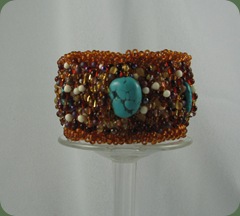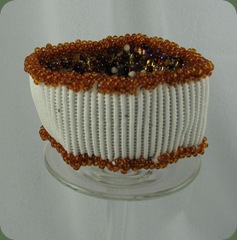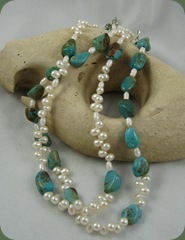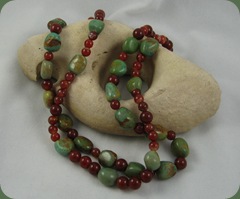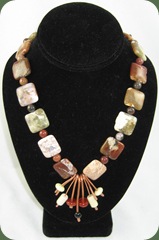Yesterday, I sat at the computer twice to write about a new design and I left the computer idle both times. The first instance occurred first thing yesterday morning. I had a jewelry photo ready to go and narrative on tap when the phone rang. “I need you now!” uttered my husband on the other end of the line. He had discovered a newborn calf. Since we were not expecting it yet we didn’t have its mother in the safe pasture. When he tried to move the pair, the little one ran through the barbed wire and electric fence onto the neighbors property. Eventually, following a loud yell when my husband encountered the electric fence, we retrieved the little and got the pair all the way to the barn. The poor newborn was so hot and tired that it . . . (good grief, the phone is ringing again this morning. . . got to go to the barn) . . . (45 minutes later) Yesterday’s “found” newborn was so hot and dirty by the time we got her to the barn, that she had to be hosed down and have the thorns pulled out of her nostrils.
Late yesterday afternoon, I again sat down to write and the mobile phone rang. Since my husband was here at the house, I just kept writing. Yet, there was another newborn that needed attention. One of our customers had a newborn calf that arrived three weeks early and couldn’t eat or stand. We grabbed a bottle, tube and warmed the frozen collostrum from our freezer, setting off on a mission to save another life. I was worried the little one would perish in the hour and a quarter drive to the ranch, but there she was when we arrived, barely able to hold up her head. I fed her all the collostrum while the two men kept the mama cow away from me and we left shaking our heads at the less than 40 lb calf. Yet, after our friend followed my advice and fed the calf both at midnight and six am, she’s standing this morning. They will bottle feed her until she can stabilize. While the calf may still have grave difficulty, it appears there is always hope.
Oh, and about today’s phone call. It WAS from the barn. We watched as another cow delivered her healthy bull calf without assistance. Whew! I need to close this writing before the phone rings again.
As for design work . . . it seems that the more compulsive I become about sticking with work, the more apt LIFE is to remind me of what is important.
